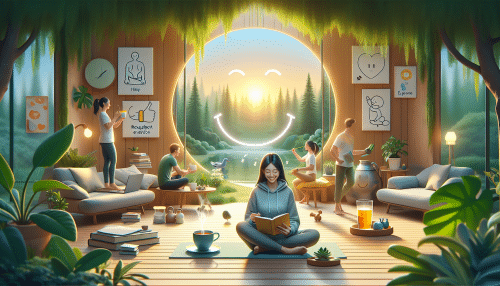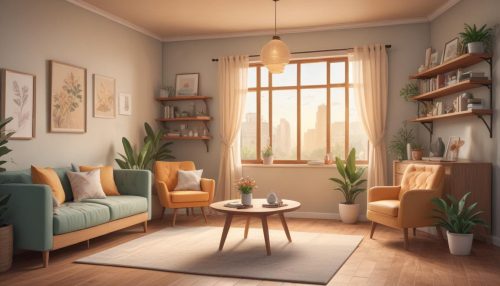You Can Transform Your Home with Minimalist Living Trends
Olivia Morgan August 22, 2025
Explore how adopting minimalist living trends can refresh your living spaces, boost mental energy, and keep daily life clutter-free. This engaging guide delves into decluttering tips, design inspiration, and the lifestyle shifts that make minimalist living appealing for so many today.
Understanding Minimalist Living and Its Lifestyle Benefits
Minimalist living isn’t just a design trend; it’s a philosophy that reshapes day-to-day life. The core of minimalism revolves around intentional choices—removing unnecessary possessions and streamlining your environment. Research reveals that a simplified living space can lead to improved focus, creativity, and lower stress levels. By choosing minimalism, many people are finding it easier to enjoy what truly matters, enjoying free time and mental clarity over material excess. Part of the appeal is the surprising freedom experienced with fewer items to manage and less visual clutter.
Adopting a minimalist lifestyle also often includes mindful consumption. Instead of constant shopping and accumulation, more people are seeking quality over quantity. Furniture becomes functional art, and multi-purpose décor is preferred. The impact on overall wellness has attracted growing interest, particularly for urban dwellers and busy professionals looking for calm. Living with less encourages more intentional interactions, creating a sense of peace that is hard to achieve in overly crowded or chaotic settings.
Minimalist living has environmental benefits as well. Decluttering means fewer things are discarded or replaced, contributing to waste reduction and sustainability goals. The lifestyle trend aligns with broader eco-friendly movements and appeals to anyone looking for long-term cost savings and reduced carbon footprints. There’s also a social shift happening—minimalism communities foster connection, sharing, and creative reuse of everyday items. All these factors underline why minimalist living is more than a fleeting fad.
Decluttering Strategies to Start Your Minimalist Home
One of the first steps toward minimalist living is a thoughtful decluttering process. Instead of tackling an entire home at once, experts recommend breaking projects into smaller zones. Begin with a single drawer or closet and sort items into keep, donate, or recycle piles. This manageable approach offers small wins that build motivation and reinforces your commitment to minimalist principles. The ‘one in, one out’ rule is a simple tool: for every new item introduced, remove an old one, keeping clutter in check over time.
Digital decluttering is just as important as physical decluttering. Unsubscribing from spam emails, organizing digital files, and streamlining device notifications minimize virtual distractions. By curating both your tangible and digital surroundings, it becomes easier to maintain sustained focus. Research highlights that cleaner digital environments may reduce anxiety and help prevent information overload—a crucial benefit for anyone balancing work and home life on shared devices.
Emotional decluttering is another concept gaining attention. By letting go of items tied to past phases or relationships, you create emotional space for new experiences. Minimalists often recommend evaluating objects by their usefulness and the joy they bring rather than guilt or obligation. Regularly reviewing personal items based on current needs, not just memories, deepens self-awareness and helps reinforce purposeful living. Decluttering is never a one-time project; it’s a repeated, mindful practice.
Design Elements that Anchor Modern Minimalist Interiors
Minimalist home design centers on clean lines and purposeful spaces. Neutral color palettes—soft whites, beiges, greys—set a tranquil tone, while natural light maximizes a sense of openness. Furniture selection focuses on function: low-profile sofas, versatile chairs, and open shelving keep rooms airy and inviting. Art and accessories are chosen sparingly, each serving as a focal point rather than background clutter. Texture becomes important, with materials like smooth wood, linen, and polished stone adding visual interest without excess.
Functional décor is a signature of minimalist style. Instead of filling shelves and tabletops, people are integrating storage into design—think hidden drawers beneath beds or benches, or dual-use pieces like ottomans that open for storage. Space-saving solutions are especially valued in small apartments and urban homes. Multi-purpose living is key: a dining table may double as a workspace, and modular sofas can shift with social gatherings or family needs.
Minimalist design isn’t cold or impersonal. Plants, art carefully chosen for meaning, and cozy textiles prevent rooms from feeling sterile. The key is intentionality; everything visible in a minimalist home plays a role, either by serving a function or sparking joy. This approach gives each object prominence, making the home feel curated and aligned with its inhabitants’ values. It’s a blend of beauty and practicality that continues to influence high-demand interior design trends globally.
Shifting Habits: Daily Life and Well-being with Less
Minimalist living has a strong impact on daily routines. With fewer belongings, household chores take less time, freeing up hours for hobbies, relationships, or relaxation. Many who adopt this lifestyle report more efficient mornings, less decision fatigue, and easier maintenance overall. The focus naturally shifts from acquisition to experience—experts suggest replacing shopping sprees with mindful walks, creative pursuits, or quality time with loved ones.
Financial wellness is another central benefit. Less buying means fewer expenses, more savings, and reduced stress about budgeting. Statistics show that minimalist households often face less debt and experience more financial security. Minimalism also encourages conscious consumerism, prompting individuals to research products, making informed purchases over impulsive choices. This shift empowers people to understand the ‘why’ behind their spending habits and invest in longevity.
Mental and emotional health often improve with minimalist living. Decluttered environments are linked to better sleep, improved mood, and even stronger immune function according to studies from psychology and wellness fields. The minimalist mindset also translates into digital life, with reduced screen time, fewer social media distractions, and healthier boundaries. The overall outcome is often described as a lighter, freer, and more energized experience of daily life.
Minimalist Living for Families and Shared Households
Minimalism adapts to families and group living, providing common ground for shared goals. Open communication about what items are essential can help everyone stay aligned and reduce conflict about clutter. Establishing clear storage solutions keeps toys, gadgets, and shared supplies organized and accessible. Children benefit from learning early the value of caring for fewer possessions and the importance of respect for shared spaces.
Minimalist family routines can include regular clean-up sessions and ‘family edit’ days where everyone participates in sorting and donating underused items. Many parents find that children grow attached not to things, but to experiences, so focusing on family outings, creative play, and collaborative projects becomes a cornerstone of minimalist homes. Decluttered playrooms and simplified wardrobes are a rising trend seen on parenting forums and in lifestyle publications.
For multi-generational or roommate households, minimalism offers practical benefits like easier cleaning and clearer boundaries. Shared living agreements may include guidelines for communal spaces and mindful purchasing decisions. Minimalist living emphasizes open dialogue, cultivating harmony and reducing friction about shared responsibilities. The trend is not about restriction, but about freedom—choosing together what matters.
The Global Appeal and Future of Minimalist Trends
Minimalist living is growing internationally, reflecting urbanization and rising environmental awareness. As city dwellers face smaller living spaces, the need for practical, space-saving solutions drives design innovation. Asian, Scandinavian, and contemporary American aesthetics each bring unique twists to minimalism, emphasizing harmony, comfort, or efficiency in new ways. This intercultural exchange inspires fresh takes on material selection, layout, and the role of technology in daily life.
The minimalism movement continues to find new expression in digital platforms and social media. Online communities share decluttering challenges, design ideas, and daily routines, helping novices and seasoned minimalists alike stay inspired. Virtual living room tours, before-and-after transformations, and tips on finding balance appeal to a global audience seeking wellness and simplicity. The digital momentum ensures the minimalist trend keeps evolving with contemporary lifestyles.
Future directions may include ‘smart minimalism,’ leveraging home technology for seamless living and time-saving automation. As sustainability becomes ever more urgent, minimalism stands out as both an ethical and aesthetic response. The joy of living with less is continually redefined, shaping how people design, organize, and experience their homes worldwide. The dialogue on minimalist living is far from over—every home tells a new story.
References
1. American Psychological Association. (2021). Minimalism and mental health: The link between clutter and anxiety. Retrieved from https://www.apa.org/monitor/2021/03/news-minimalism
2. Environmental Protection Agency. (2022). Sustainable management of materials. Retrieved from https://www.epa.gov/smm
3. Harvard Health Publishing. (2020). How de-cluttering can help your health. Retrieved from https://www.health.harvard.edu/staying-healthy/how-de-cluttering-can-help-your-health
4. National Endowment for the Arts. (2021). The impact of minimalist design on creative well-being. Retrieved from https://www.arts.gov/stories/blog/2021/impact-minimalist-design-creative-well-being
5. UCLA Center for the Everyday Lives of Families. (2019). Life at home in the twenty-first century. Retrieved from https://www.ioa.ucla.edu/research/celf-project
6. Global Wellness Institute. (2023). Wellness lifestyle trends. Retrieved from https://globalwellnessinstitute.org/wellnesslifestyle





